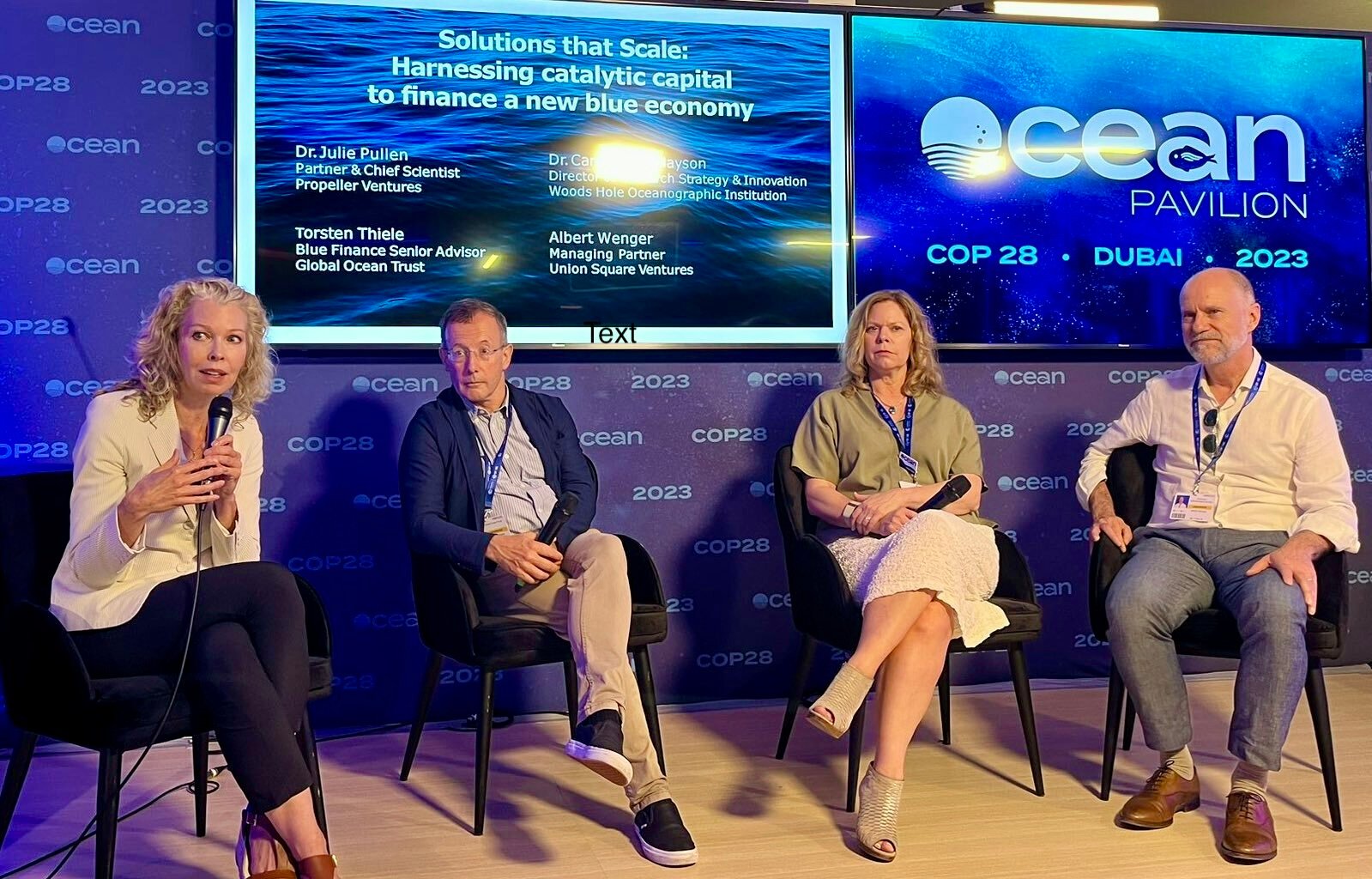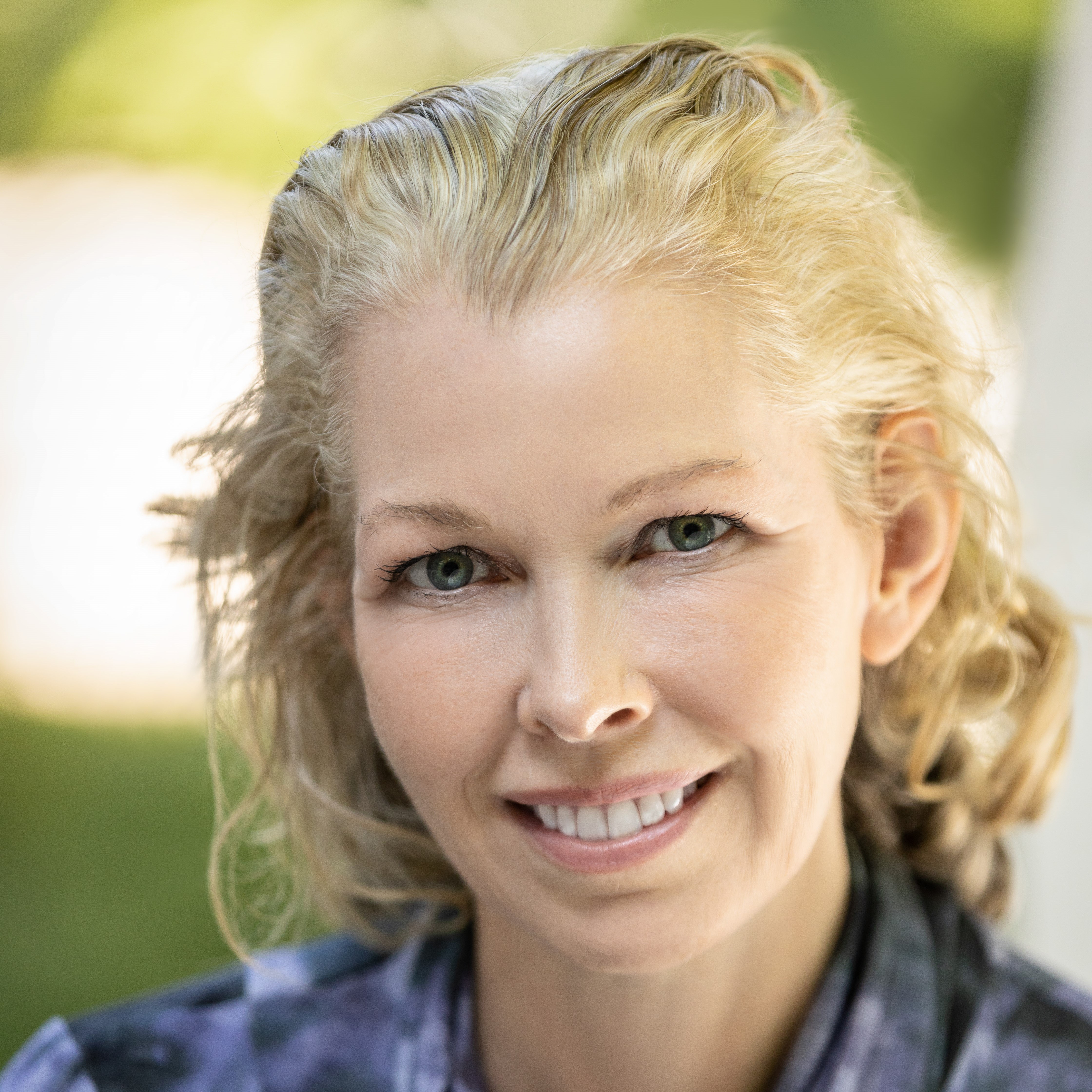COP28, The Ocean Pavilion, and Championing The Ocean's Role as Climate Solution

This year’s COP was a sea change for the growing recognition of the role and speed of innovation in climate tech, and especially in the oceans. Multiple pavilions and a “start-up village” in the Green Zone drew attention to the ways private capital is scaling up broader climate solutions. And the opportunity for public-private financing of truly transformative approaches was at its most palpable. A new $250M Ocean Resilience and Climate Alliance (ORCA) fund was announced, encompassing a portfolio vital to planetary stabilization. In addition, hallway conversations featured the concept of a global “Innovation Fund” to match the scale of scope of what is needed to drive tech solutions that partner with the Global South at inception.
In the context of the negotiations at COP, the successful establishment of a Loss and Damage Fund early on (albeit underfunded) and methane emissions commitments gave way to strenuous negotiations about the Global Stocktake language. In the end, actually naming the source of the problem - calling out “fossil fuels” - was finally achieved in the text last week, while a broader call for “phase out” gave way to the milder aspiration of “[transitioning] away from.”
 This matters because despite ~30 years of climate negotiations, emissions are at an all-time high of over 40 GT/yr. The ardent youth (pictured left) have not seen emissions reductions in their lifetime, despite the increasingly severe climate impacts visited upon the Global South, especially island nations, and the promises of collective action. Awash in non-binding pledges of future reductions decades hence, anger and frustration were overflowing in the final week: “How do we go home and face our children? How do we go home and face our people in the Pacific Islands and tell them that our governments have sold them out. I can’t answer that? Can you.” Brianna Fruean of Samoa asked at a press conference.
This matters because despite ~30 years of climate negotiations, emissions are at an all-time high of over 40 GT/yr. The ardent youth (pictured left) have not seen emissions reductions in their lifetime, despite the increasingly severe climate impacts visited upon the Global South, especially island nations, and the promises of collective action. Awash in non-binding pledges of future reductions decades hence, anger and frustration were overflowing in the final week: “How do we go home and face our children? How do we go home and face our people in the Pacific Islands and tell them that our governments have sold them out. I can’t answer that? Can you.” Brianna Fruean of Samoa asked at a press conference.
Our oceans are the seat of climate stabilization of the earth system. It was heartening to see oceans be a growing emphasis at COP, propelled by the enlarged Ocean Pavilion and the Dubai Declaration released at the outset of COP. Our founding partner WHOI along with our new partner Scripps Institution of Oceanography mounted a protean effort to make the Ocean Pavilion bigger and even more successful than last year. Propeller was pleased to join the group of supporters helping to realize the expanded reach of the Pavilion.
The Ocean Pavilion in the Blue Zone anchored the ocean  community and visiting officials from the Senate, State Department, NOAA and international dignitaries. It also curated informed science-based discussion on corals, polar extremes, CDR, ocean finance and a myriad of other ocean-related topics. I joined a panel on coral loss and solutions along with WHOI scientists and youth entrepreneurs and activists.
community and visiting officials from the Senate, State Department, NOAA and international dignitaries. It also curated informed science-based discussion on corals, polar extremes, CDR, ocean finance and a myriad of other ocean-related topics. I joined a panel on coral loss and solutions along with WHOI scientists and youth entrepreneurs and activists.
Also at the Ocean Pavilion, our panel on “Solutions that Scale: Harnessing catalytic capital to finance a new blue economy” featured blue finance leader Torsten Thiele, Dr. Carole Anne Clayson who is Director of Research Strategy and Innovation at  WHOI, and Albert Wenger of Union Square Ventures. We sketched the role of a Manhattan Project-sized initiative to include measuring the oceans for carbon, temperature, oxygen, biodiversity and other key parameters that crucially undergird the new blue economy. We also explored financing mechanisms at the public-private interface and how insurance and other sectors are approaching coastal loss and resilience.
WHOI, and Albert Wenger of Union Square Ventures. We sketched the role of a Manhattan Project-sized initiative to include measuring the oceans for carbon, temperature, oxygen, biodiversity and other key parameters that crucially undergird the new blue economy. We also explored financing mechanisms at the public-private interface and how insurance and other sectors are approaching coastal loss and resilience.
The growth in participation by the private sector and the growing recognition of the role of climate tech in all areas of climate action was a notable achievement of COP28. Ocean CDR broke onto the main stage of the Tech & Innovation Hub in the Green Zone where I came together, thanks to Cool Climate Collective, with NOAA CDR lead Gabby Fitch and Brenna Boehman (of WHOI and a CDR start-up) to discuss the state of the oceans and carbon removal initiatives and technologies (below left). I also met with startups and toured the Startup Village with Propeller friend, investor and Ocean MBA lecturer Tod Hynes (pictured right).
Of the vast number of participants at COP, only an estimated 0.5% were scientists. I was part of the American Meteorological Society delegation and engaged in a number of science events across multiple pavilions. At the World Meteorological Organization Pavilion I came together with a UBC professor of fisheries originally from Ghana (Dr. Ussif Rashid Sumaila), a professor of coral reefs from Australia (Dr. Ove Hoegh-Guldberg), a youth advocate & activist (Clara Botto) and the head of the University of Cambridge Center on Climate Repair (Shaun Fitzgerald). Our discussion organized by Ocean Visions on “Tipping Points, Climate Repair and the role of Science & Technology” was underscored by the recently released Cryosphere Report. New funding mechanisms like ORCA (highlighted above) operate at the crossroads of these topics, and more funding initiatives are in formation.
The composition of participants at COP is so far-ranging that what ensued on the sidelines of the negotiations was a plethora of announcements of achievements, initiatives and ambitions. Below are select highlights in the nature realm.
- The Mangroves Breakthrough is assembling $4B by 2030 for mangrove protection and restoration.
- Colombia stepped forward to host the fall 2024 COP16 Biodiversity Conference and has also exceeded its 30x30 goals - the first country to do so.
- The Republic of Congo (Minister of Environment Arlette Soudan-Nonault pictured below) made an impassioned plea for support to protect the Congo Basin. It is the leading forest carbon sink and gets far less attention than the Amazon. The centrality of maintaining the integrity of our planetary carbon sinks must be key on any planetary stabilization agenda.
- We also saw women’s leadership come to the foreground in the calm, graceful and steady hand of UNFCCC High-level Champion (and IUCN head) Razan Al Mubarak and Colombia’s Environment Minister Susana Muhamad.
In closing, the potential to grow the solution space with new funding streams, as well as deeply collaborative work centering science and technology that reaches across sectors and individuals feels very much like a priority that is emerging. At COP the UAE took the lead on organizing AI for Climate Action events in line with their country-level technology focus. In these activities we see the glimmers of how we might transform our world by bringing together deep-tech with grounded planetary stewardship.
Up ahead: I am a co-lead for the climate-themed American Meteorological Society’s Annual Meeting next month in Baltimore, along with President Brad Colman, Kristen Averyt and Kerry Emanuel. The meeting has garnered an unparalleled number of submissions in AI/ML for weather/climate. I look forward to an important Town Hall I am doing with NOAA and also hosting the first ever climate tech reception. Please get in touch if you are attending and want to join for it.

